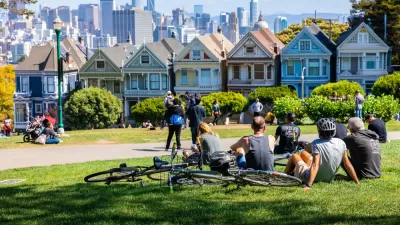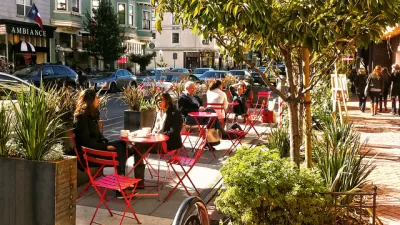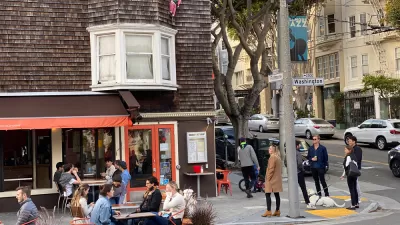Andres Power, an urban designer for the San Francisco Planning Department, is the driving force behind the city's now-popular Pavement to Park program. Streetsblog's Bryan Goebel sat down to talk with him about the process.
As anyone who does city planning knows, even a popular program requires a great deal of effort and engagement - particularly within the government bureaucracy itself, says Power:
"It's incredibly difficult to get people to just say, 'this is how we're going to make it happen.' The culture has been changing and it's gotten much better, at least in a relative sense over the last number of years, but the culture's always been, 'no, you can't do it and this is why.' It's never been, 'This is what you want to do, let's figure out how we're going to make it happen.'"
Power believes that the "NIMBY" attitude is understandable:
"I think it's perfectly legitimate for people to not want something and I think that's just part of the way things are in a heterogeneous community. Generally speaking, most people want urban public spaces, most people want open space, most people want amenities, most people want bicycle infrastructure, most people want storm water improvements. So, it's not convincing people of the merits of that per se."
Read the extensive interview over at Streetsblog.
FULL STORY: Andres Power Helps Lead a Streets Renaissance One Parklet at a Time

Planetizen Federal Action Tracker
A weekly monitor of how Trump’s orders and actions are impacting planners and planning in America.

Map: Where Senate Republicans Want to Sell Your Public Lands
For public land advocates, the Senate Republicans’ proposal to sell millions of acres of public land in the West is “the biggest fight of their careers.”

Restaurant Patios Were a Pandemic Win — Why Were They so Hard to Keep?
Social distancing requirements and changes in travel patterns prompted cities to pilot new uses for street and sidewalk space. Then it got complicated.

Platform Pilsner: Vancouver Transit Agency Releases... a Beer?
TransLink will receive a portion of every sale of the four-pack.

Toronto Weighs Cheaper Transit, Parking Hikes for Major Events
Special event rates would take effect during large festivals, sports games and concerts to ‘discourage driving, manage congestion and free up space for transit.”

Berlin to Consider Car-Free Zone Larger Than Manhattan
The area bound by the 22-mile Ringbahn would still allow 12 uses of a private automobile per year per person, and several other exemptions.
Urban Design for Planners 1: Software Tools
This six-course series explores essential urban design concepts using open source software and equips planners with the tools they need to participate fully in the urban design process.
Planning for Universal Design
Learn the tools for implementing Universal Design in planning regulations.
Heyer Gruel & Associates PA
JM Goldson LLC
Custer County Colorado
City of Camden Redevelopment Agency
City of Astoria
Transportation Research & Education Center (TREC) at Portland State University
Camden Redevelopment Agency
City of Claremont
Municipality of Princeton (NJ)





























